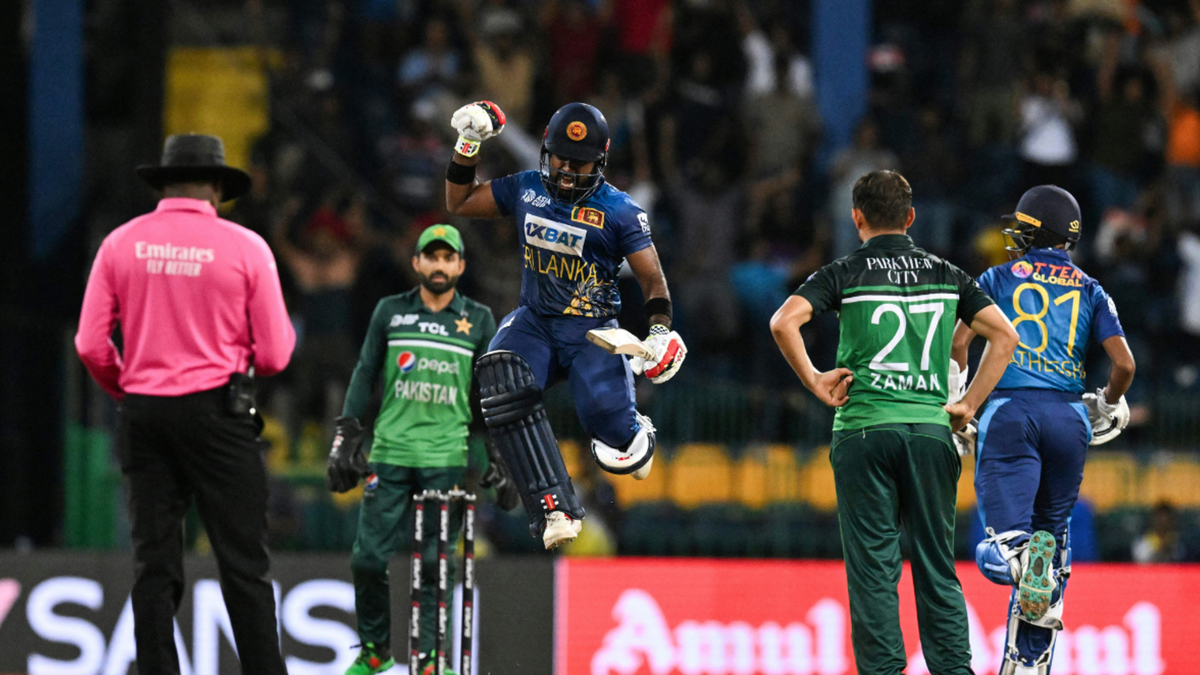
Sri Lanka beat Pakistan by two wickets yesterday (September 14) in a final-ball thriller which booked their place in the Asia Cup final. However, their target was reduced by a single run before they began the chase, ensuring the two scored off the final ball of the match was enough to win the game. Here’s why.
Subscribe to the Wisden Cricket YouTube channel for post-match analysis, player interviews, and much more.
In a chaotic final two overs that started with Sri Lanka needing 12 off as many balls, Shaheen Shah Afridi took two wickets in two balls to turn the game on its head. A chaotic runout in the next over reduced the equation to six off the final two. Charith Asalanka hit a four and a two to see Sri Lanka reach 252-8 off their 42 overs (innings reduced by rain), the same total Pakistan had reached in their innings.
Rain had delayed the start of the match earlier in the day, reducing the game to 45 overs per side. By the end of the 27th over, Pakistan had reached 128-4. Only four balls of the 28th over were possible before the rain returned. Crucially, the fourth ball saw Mohammad Nawaz lose his wicket, meaning Pakistan went into the rain delay on 130-5.
A short break meant the game was further reduced to 42 overs per side. Pakistan scored 102 runs off their final ten overs, largely thanks to an unbeaten 86 off 73 balls from Mohammad Rizwan, to finish on 252-7. However, because of the mid-innings break, the DLS method adjudged that one run should be taken off Sri Lanka’s target.
The relevant part of the DLS system concerned in this decision is the number of wickets and balls Pakistan had in hand when the innings was interrupted. The system works on the basis that the more resources a team uses up before their innings is reduced, the more the reduction will benefit the opposition. A team that is 200-7 after 35 overs would typically score less off the final 15 than a team that is 200-1. If there was no adjustment for wickets lost made, the chasing team would then have fewer overs in which to get a bigger total than the team batting first would likely have reached. Thus, a reduction in runs required is made according to the batting resources a team has lost before the reduction in overs.
Pakistan lost their fifth wicket from the ball before rain interrupted play. Thus, at the end of the innings, DLS reduced the total by one run to account for the extra batting resource lost before the rain delay. Had Nawaz gone into the rain delay unbeaten, the target would more than likely not have been reduced, or even been increased.
As it was, Sri Lanka were able to capitalise on the reduction to reach their 11th Asia Cup final. That extra run on the target would have seen Sri Lanka equal Pakistan’s score should play have panned out in the same way, with a super over deciding who would be the side to face India in Sunday’s final.








